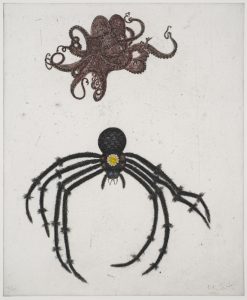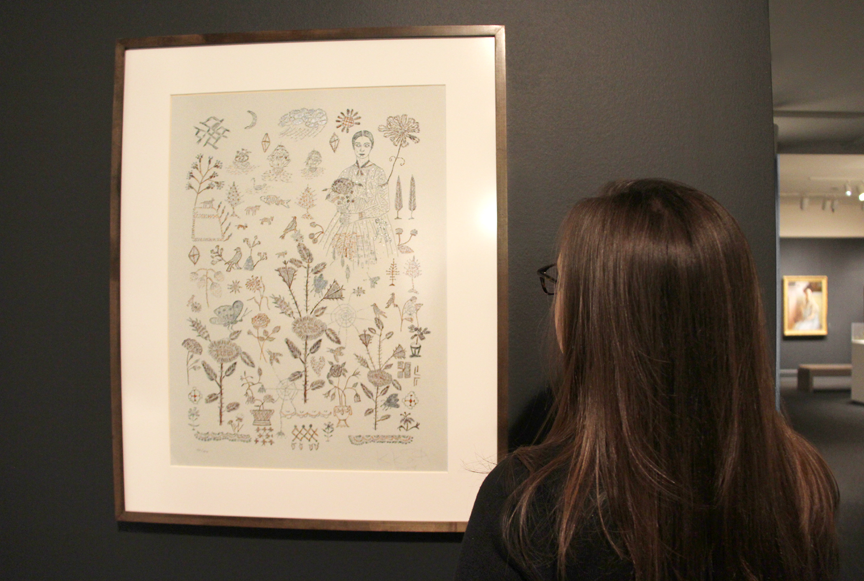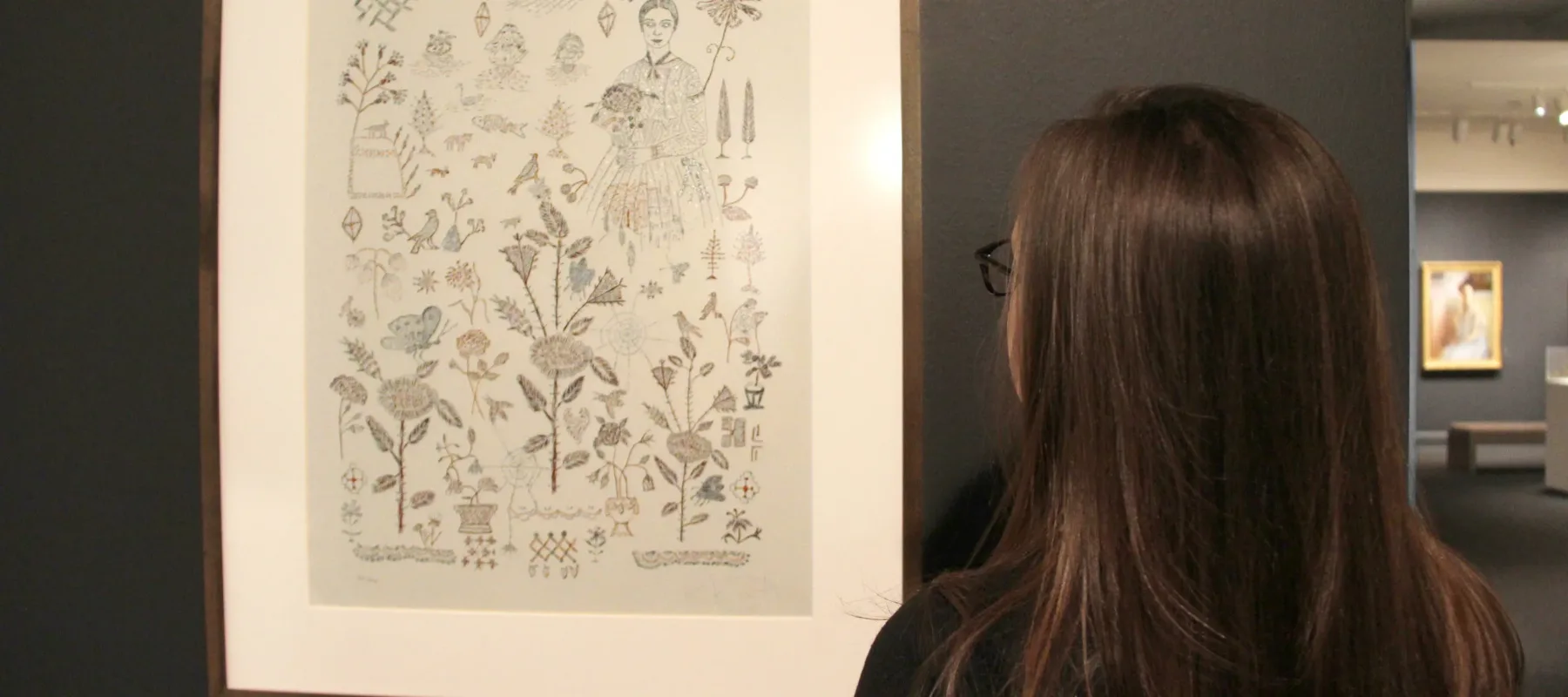Impress your friends with five fast facts about Kiki Smith (b. 1954), whose work is on view in NMWA’s collection galleries.

Kiki Smith (b. 1954)
1. Spirited Away
Smith cites Catholicism’s focus on the human body as source material. “Catholicism is a body-fetishized religion. It’s always taking inanimate things and giving meaning to them.” Smith has based sculptures on Mary Magdalene and the Virgin Mary, but uprooted traditional expectations.
2. Proof is in the Print
Although she is best-known as a sculptor, Smith has also worked in printmaking since the late 1970s. The “endlessly fascinating” printmaking process allows Smith to examine proofs at various stages, offering the artist the flexibility to experiment and re-work an image until she is satisfied with the result.
3. Poetic License
Smith’s work on view at NMWA highlights her interest in the relationship between women and nature. She illustrated Sampler, a book of poetry by Emily Dickinson, and assembled the drawings into one hand-colored and gilded layout. Smith’s imagery was inspired by embroidered samplers from the 18th and 19th centuries.

4. Life and Death
Smith lost her father in 1980 and her sister, Beatrice, to AIDS, in 1988. These deaths prompted Smith to explore themes of ephemerality and mortality. In this vein, she has created death masks in homage to her family and friends. She also cited Gray’s Anatomy as inspiration and studied cadavers.
5. Matter of Opinion
Friends fuel Smith’s creative process. She explains that “you get the benefit of everyone’s opinions and so it’s not just about you in your you-dom.” Welcoming other perspectives, Smith says, “I’d rather make something that’s very open-ended that can have a meaning to me, but then it also can have a meaning to somebody else.”

